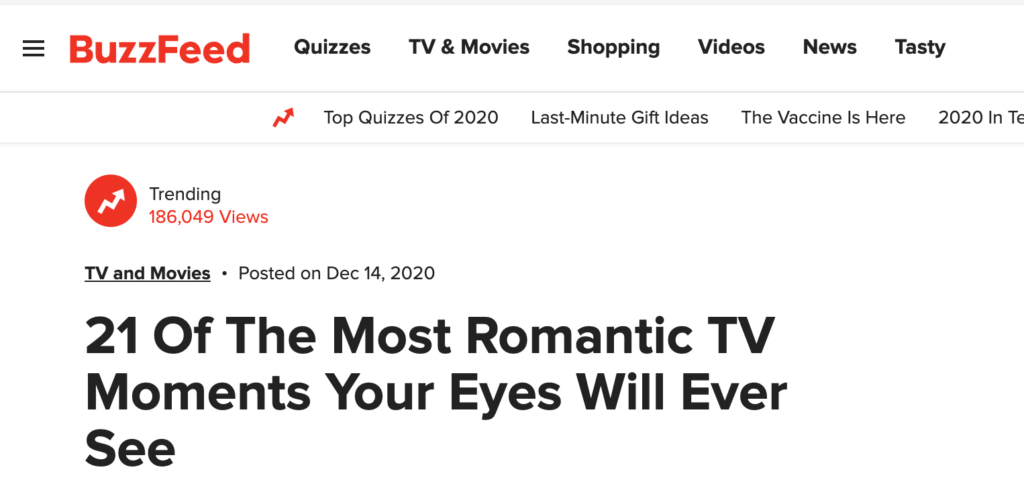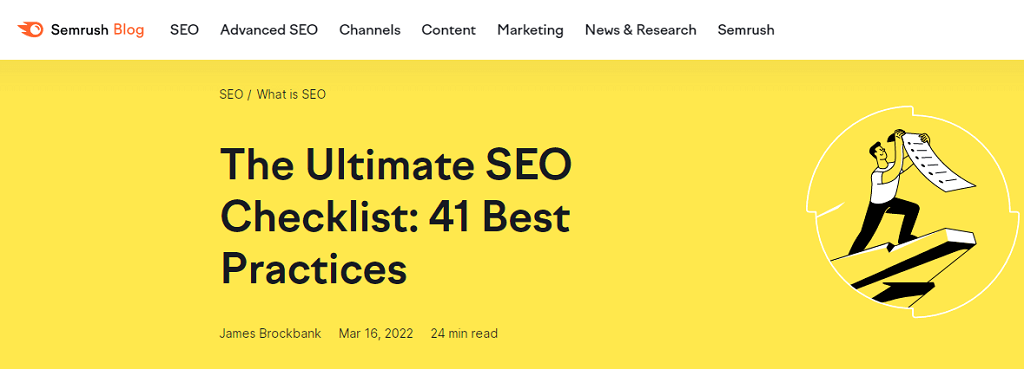Raise your hand if you’ve ever tried to compose a blog article and spent way too much time staring at a blank document. Is there a way to get around this quickly? Of course, ask for a friend…
And even if you’ve managed to break through writer’s block, your content may be starting to look the same. Changing formats and presenting your information differently goes a long way in making your blog engaging and presenting well to your audience.
Finally, it’s important to keep tabs on your audience, and any savvy marketer knows that blogs are fantastic for driving market share, customer engagement, ROI, and revenue growth. You wouldn’t even need to look at the wealth of data-backed evidence to support this, it’s pretty obvious from the fact in itself that there are 600 million active blogs in 2020.
Businesses that blog weekly get more traffic than businesses that don’t, yet over 4 million blog posts are published every day. So if you’re blogging every two weeks, you should rethink your blogging strategy.
It’s hard to deny that there’s something about blogging that works—and we’ll get into those mechanics another day. But be aware that by optimizing your blog’s content, website architecture, and HTML code, you increase the SEO quality of your website by indexing it higher up in those elusive rankings.
Okay, back to the blank document and the blinking cursor. There are many ideas online, but looking for them can lead you down a rabbit hole. So I’ve put together a cheat sheet of 7 proven formats for writing a quality blog post that will drive traffic to your website.
Table of Contents
7 Best Ideas For Clickable Blog Posts
Lists blog posts
What you are reading is a list-style blog. ” Listicles,” as they’re called, are a curated list of easy-to-read items, with a bit of explanation and an example. Lists are extremely popular content to consume and have the potential to go viral. The benefit of a list is that it’s searchable, so your reader can quickly find what they need, or skip items they’re already familiar with.
Lists are numbered so your readers know what to expect, so it’s a good idea to include the number of entries in your blog’s title. Just make sure you toggle it and put the number somewhere else so when you scroll through your blog, all of your articles don’t start with a number, like this:
- 8 Strategies For Affiliate Marketers To Find Warm Leads
- 5 tips to avoid problems with your merchant account
- 6 Affordable Hosting Providers for Digital Marketers
You definitely want to avoid that.
Listicles are often trending on popular blogging sites (BuzzFeed, Popsugar, Upworthy, BoredPanda, etc.), so just look there for inspiration. Here’s one that got over 100,000 views in less than 24 hours on BuzzFeed:

How-To Guides and tutorials blog posts
“Google it” is a dictum in everyday life. There are billions, literally billions, of searches online every day. People don’t have to look far to access the freely available information they need in a given scenario. You never know what someone might look up online, so it’s always worth posting some sort of tutorial or step-by-step guide.
Because chances are – no matter how seemingly unique or specific – there’s someone out there who wants to do exactly what you already know (or don’t like). Even if you are not a subject matter expert, although you should emphasize that you are, you are qualified to provide value based on your personal experiences and achievements.
You should do thorough research on how to write a quality “how-to” guide, or hire someone to do it for you so your niche market can find you. Again, in this format, you’re up against strong competition from video content (e.g., YouTube tutorials), so make it as valuable as possible, even linking to other media. Here are some basic tips:
- Create detailed guides
- Add lots of visual elements (image and/or video)
- Back up your claims with data
- Insert links
- Pay attention to the arrangement
Controversial topics blog posts
If you’ve ever sought blogging advice, you’ve probably heard “be controversial.” It’s a bit like walking on a tightrope, though. They are very good at attracting and holding attention and then successfully pulling it away. But it also doesn’t take much for you to land flat on your face. While some would argue that there’s no such thing as bad publicity as long as you make a splash if you’re a small business owner you might not feel brave enough to take the risk of upsetting customers.
So, instead of writing a controversial blog post, you can write about a controversial topic – weighing both sides of the argument and summarizing relevant information to give readers an up-to-date overview.
This way, you can include all keywords and tap into organic traffic without immediately causing a controversy. Remember and be warned that posting any kind of opinion means opening yourself up to comments from people who don’t know you or your intentions. And that’s just saying in general terms. So first, consider how well you would receive negative comments or criticism from a potentially divisive topic and whether or not you could handle it en masse.
101 Beginners’ guide blog posts
There will always be a need for beginner-level introductory courses for complete novices who have no prior knowledge or experience in the matter. It’s important that these guides are incredibly accessible and non-intimidating to really successfully encourage learners to explore unfamiliar territory.
The good news is that you don’t have to be an expert yourself to write for this audience. In fact, this will probably work to your advantage as they will be able to relate to you better! So in terms of guide writing, perhaps this is a more forgiving place to start and get published quickly.
Write with empathy and make the most of the visual elements. Just keep thinking about what could have benefited you from that knowledge at that particular stage. This is a great opportunity to look for a gap in the market and think about how to go beyond the generic guides already available by finding a new angle or pain point that may not have been covered in as much depth.
A good example is the universally recognized “For Dummies” series, which is one of the most successful reference series simply because of the beginner-friendly materials. As Albert Einstein allegedly said, “If you can’t explain it simply, you don’t understand it well enough.”
Ultimate guide blog posts
On the other side of the beginner’s guide, there are some readers who are specifically looking for in-depth, credible information from subject matter experts. The expertise of this audience means you are able to provide quality content for your niche through keyword-rich and SEO-optimized guides.
Here you can establish yourself as an industry leader among your peers and build an online presence at the same time. The downside is that this will be a time-consuming accomplishment, but it’s something you really want to spend time on before you publish.
However, in order to show off your best, you really should back up your information with reputable sources and statistics. Again, you should demonstrate competence and mastery of your research methodology. Plagiarism is a no-go, so always give your sources the correct attribution. And make absolutely sure that your ultimate guide is a real ultimate guide, rather than just using the word “ultimate” in your title.
Tools and Resources blog posts
Similar to the ultimate guide, this also requires time for some research and a careful selection of information to provide quality value to your readers. It’s a time-consuming process to verify each of these tools or the usefulness of the resources, but that’s what makes it such shareable content. And don’t take it lightly, it’s crucial that you actually research everything you recommend—especially because you don’t want to appear like you’ve lost touch with your audience.
But since there are so many items, make sure there’s always something impressive in your summary list, along with actionable tips. To make this easier, dig deep and be very specific when choosing your chosen topic for your niche market.
There is no need to write a list of 101 tools and resources as your reader is unlikely to use all of them. Create a more personalized list that you know will benefit your audience and give them a better understanding of how they, too, can benefit from using these tools. And don’t do any self-promotion; just suggest one of your products or services in the blog – if relevant.
Checklists blog posts
Is there anything more enjoyable than checking something off your to-do list? Checklists help us to break down processes into small steps, which makes it much easier to approach the task at hand. They also prevent you from missing steps, so you spend less time fixing errors after the fact. All in all, they’ll just save you a massive headache later.
Those who love checklists really love them – this is great news for you because if you create them, they will find them! Well, if you’re optimizing for SEO, that is. But with a good checklist, you can reach many search queries and convince your readership with valuable content.
All seven of these formats are easy enough to follow for any blogger with a bit of time that you don’t need to hire a professional writer to consistently create coveted clickable content (okay, well, now we’re just bragging). So just think about your audience and always think about how to present your content to best serve them.
One final tip is to incorporate the type of blog into the title to grab attention and use keywords for SEO – just like this one:” 7 Best Ideas For Clickable Blog Posts “. The title tells the reader what to expect. And, most importantly, once the reader (you) clicks to read, your expectations will be met with a list of 7 Blogging Format Ideas along with real-life examples.









